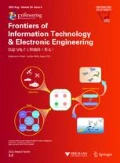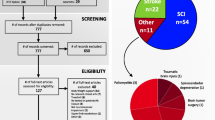Abstract
Lower-limb assisted exoskeletons are widely researched for movement assistance or rehabilitation training. Due to advantages of compliance with human body and lightweight, some cable-driven prototypes have been developed, but most of these can assist only unidirectional movement. In this paper we present an untethered cable-driven ankle exoskeleton that can achieve plantarflexion-dorsiflexion bidirectional motion bilaterally using a pair of single motors. The main weights of the exoskeleton, i.e., the motors, power supplement units, and control units, were placed close to the proximity of the human body, i.e., the waist, to reduce the redundant rotation inertia which would apply on the wearer’s leg. A cable force transmission system based on gear-pulley assemblies was designed to transfer the power from the motor to the end-effector effectively. A cable self-tension device on the power output unit was designed to tension the cable during walking. The gait detection system based on a foot pressure sensor and an inertial measurement unit (IMU) could identify the gait cycle and gait states efficiently. To validate the power output performance of the exoskeleton, a torque tracking experiment was conducted. When the subject was wearing the exoskeleton with power on, the muscle activity of the soleus was reduced by 5.2% compared to the state without wearing the exoskeleton. This preliminarily verifies the positive assistance effect of our exoskeleton. The study in this paper demonstrates the promising application of a lightweight cable-driven exoskeleton on human motion augmentation or rehabilitation.
Similar content being viewed by others
References
Asbeck AT, de Rossi SMM, Galiana I, et al., 2014. Stronger, smarter, softer: next-generation wearable robots. IEEE Robot Autom Mag, 21(4):22–33. https://doi.org/10.1109/mra.2014.2360283
Awad LN, Bae J, O’donnell K, et al., 2017. A soft robotic exosuit improves walking in patients after stroke. Sci Trans Med, 9(400):eaai9084. https://doi.org/10.1126/scitranslmed.aai9084
Bai Y, Gao XS, Zhao J, et al., 2015. A portable ankle-foot rehabilitation orthosis powered by electric motor. Open Mech Eng J, 9(1):982–991. https://doi.org/10.2174/1874155x01509010982
Browning RC, Modica JR, Kram R, et al., 2007. The effects of adding mass to the legs on the energetics and biomechanics of walking. Med Sci Sports Exerc, 39(3):515–525. https://doi.org/10.1249/mss.0b013e31802b3562
Cherry MS, Kota S, Young A, et al., 2016. Running with an elastic lower limb exoskeleton. J Appl Biomech, 32(3):269–277. https://doi.org/10.1123/jab.2015-0155
Collins SH, Wiggin MB, Sawicki GS, 2015. Reducing the energy cost of human walking using an unpowered exoskeleton. Nature, 522(7555):212–215. https://doi.org/10.1038/nature14288
Diller S, Majidi C, Collins SH, 2016. A lightweight, low-power electroadhesive clutch and spring for exoskeleton actuation. Proc IEEE Int Conf on Robotics and Automation, p.682-689. https://doi.org/10.1109/icra.2016.7487194
Dong TY, Zhang XL, Liu T, 2018. Artificial muscles for wearable assistance and rehabilitation. Front Inform Technol Electron Eng, 19(11):1303–1315. https://doi.org/10.1631/FITEE.1800618
Farris RJ, Quintero HA, Goldfarb M, 2011. Preliminary evaluation of a powered lower limb orthosis to aid walking in paraplegic individuals. IEEE Trans Neur Syst Rehabil Eng, 19(6):652–659. https://doi.org/10.1109/tnsre.2011.2163083
Forrester LW, Roy A, Krebs HI, et al., 2011. Ankle training with a robotic device improves hemiparetic gait after a stroke. Neurorehabil Neur Repair, 25(4):369–377. https://doi.org/10.1177/1545968310388291
Galle S, Malcolm P, Collins SH, et al., 2017. Reducing the metabolic cost of walking with an ankle exoskeleton: interaction between actuation timing and power. J Neuroeng Rehabil, 14(1):35. https://doi.org/10.1186/s12984-017-0235-0
He Y, Li N, Wang C, et al., 2019. Development of a novel autonomous lower extremity exoskeleton robot for walking assistance. Front Inform Technol Electron Eng, 20(3):318–329. https://doi.org/10.1631/FITEE.1800561
Hou TG, Yang XB, Aiyama Y, et al., 2019. Design and experiment of a universal two-fingered hand with soft fingertips based on jamming effect. Mech Mach Theory, 133:706–719. https://doi.org/10.1016/j.mechmachtheory.2018.12.013
Jatsun S, Savin S, Yatsun A, 2017. Footstep planner algorithm for a lower limb exoskeleton climbing stairs. Proc 2nd Int Conf on Interactive Collaborative Robotics, p.75-82. https://doi.org/10.1007/978-3-319-66471-2_9
Jiménez-Fabián R, Verlinden O, 2012. Review of control algorithms for robotic ankle systems in lower-limb orthoses, prostheses, and exoskeletons. Med Eng Phys, 34(4):397–408. https://doi.org/10.1016/j.medengphy.2011.11.018
Kim S, Son Y, Choi S, et al., 2015. Design of a simple, lightweight, passive-elastic ankle exoskeleton supporting ankle joint stiffness. Rev Sci Instrum, 86(9):095107. https://doi.org/10.1063/1.4930561
Kuan JY, Pasch KA, Herr HM, 2018. A high-performance cable-drive module for the development of wearable devices. IEEE/ASME Trans Mech, 23(3):1238–1248. https://doi.org/10.1109/tmech.2018.2822764
Kumar BP, Krishnan CMC, 2016. Comparative study of different control algorithms on brushless DC motors. Proc Biennial Int Conf on Power and Energy Systems: Towards Sustainable Energy, p.1-5. https://doi.org/10.1109/pestse.2016.7516444
Kyeong S, Shin W, Yang MJ, et al., 2019. Recognition of walking environments and gait period by surface electromyography. Front Inform Technol Electron Eng, 20(3):342–352. https://doi.org/10.1631/FITEE.1800601
Lairamore C, Garrison MK, Bandy W, et al., 2011. Comparison of tibialis anterior muscle electromyography, ankle angle, and velocity when individuals post stroke walk with different orthoses. Prosthet Orthot Int, 35(4):402–410. https://doi.org/10.1177/0309364611417040
Lin PY, Yang YR, Cheng SJ, et al., 2006. The relation between ankle impairments and gait velocity and symmetry in people with stroke. Arch Phys Med Rehabil, 87(4):562–568. https://doi.org/10.1016/j.apmr.2005.12.042
Mancini M, Chiari L, Holmstrom L, et al., 2016. Validity and reliability of an IMU-based method to detect APAs prior to gait initiation. Gait Post, 43:125–131. https://doi.org/10.1016/j.gaitpost.2015.08.015
Meijneke C, van Dijk W, van der Kooij H, 2014. Achilles: an autonomous lightweight ankle exoskeleton to provide push-off power. Proc 5th IEEE RAS/EMBS Int Conf on Biomedical Robotics and Biomechatronics, p.918-923. https://doi.org/10.1109/biorob.2014.6913898
Miller LE, Zimmermann AK, Herbert WG, 2016. Clinical effectiveness and safety of powered exoskeleton-assisted walking in patients with spinal cord injury: systematic review with meta-analysis. Med Dev Evid Res, 9:455–466. https://doi.org/10.2147/mder.s103102
Morris M, Shoham M, 2009. Applications and theoretical issues of cable-driven robots. Proc Florida Conf on Recent Advances in Robotics, p.1-29.
Noda T, Takai A, Teramae T, et al., 2018. Robotizing doublebar ankle-foot orthosis. Proc IEEE Int Conf on Robotics and Automation, p.2782-2787. https://doi.org/10.1109/icra.2018.8462911
Novacheck TF, 1998. The biomechanics of running. Gait Post, 7(1):77–95. https://doi.org/10.1016/S0966-6362(97)00038-6
Park YL, Chen BR, Pérez-Arancibia NO, et al., 2014. Design and control of a bio-inspired soft wearable robotic device for ankle-foot rehabilitation. Bioinspir Biomim, 9(1):016007. https://doi.org/10.1088/1748-3182/9/1/016007
Ruiz AF, Forner-Cordero A, Rocon E, et al., 2006. Exoskeletons for rehabilitation and motor control. Proc 1st IEEE/RAS-EMBS Int Conf on Biomedical Robotics and Biomechatronics, p.601-606. https://doi.org/10.1109/biorob.2006.1639155
Rupal BS, Singla A, Virk GS, 2016. Lower limb exoskeletons: a brief review. Proc 22nd National Conf on Mechanical Engineering and Technology, p.130-140.
Sankai Y, 2010. HAL: hybrid assistive limb based on cybernics. In: Kaneko M, Nakamura Y (Eds.), Robotics Research. Springer Berlin Heidelberg, p.25–34. https://doi.org/10.1007/978-3-642-14743-2_3
Sawicki GS, Khan NS, 2016. A simple model to estimate plantarflexor muscle-tendon mechanics and energetics during walking with elastic ankle exoskeletons. IEEE Trans Biomed Eng, 63(5):914–923. https://doi.org/10.1109/tbme.2015.2491224
Shorter KA, Kogler GF, Loth E, et al., 2011. A portable powered ankle-foot orthosis for rehabilitation. J Rehabil Res Dev, 48(4):459–472. https://doi.org/10.1682/jrrd.2010.04.0054
Stewart JD, 2008. Foot drop: where, why and what to do? Pract Neurol, 8(3):158–169. https://doi.org/10.1136/jnnp.2008.149393
Taborri J, Palermo E, Rossi S, et al., 2016. Gait partitioning methods: a systematic review. Sensors, 16(1):66. https://doi.org/10.3390/s16010066
Wehner M, Quinlivan B, Aubin PM, et al., 2013. A lightweight soft exosuit for gait assistance. Proc IEEE Int Conf on Robotics and Automation, p.3362-3369. https://doi.org/10.1109/icra.2013.6631046
Winter DA, 2009. Biomechanics and Motor Control of Human Movement. Wiley, Hoboken, USA.
Witte KA, Zhang JJ, Jackson RW, et al., 2015. Design of two lightweight, high-bandwidth torque-controlled ankle exoskeletons. IEEE Int Conf on Robotics and Automation, p.1223-1228. https://doi.org/10.1109/icra.2015.7139347
Wu A, Yang XB, Kuan JY, et al., 2019. An autonomous exoskeleton for ankle plantarflexion assistance. Int Conf on Robotics and Automation, p.1713-1719. https://doi.org/10.1109/icra.2019.8793913
Zhang YF, Kleinmann RJ, Nolan KJ, et al., 2019. Preliminary validation of a cable-driven powered ankle-foot orthosis with dual actuation mode. IEEE Trans Med Robot Bion, 1(1):30–37. https://doi.org/10.1109/tmrb.2019.2895787
Zoss A, Kazerooni H, Chu A, 2005. On the mechanical design of the Berkeley Lower Extremity Exoskeleton (BLEEX). IEEE/RSJ Int Conf on Intelligent Robots and Systems, p.3465-3472. https://doi.org/10.1109/iros.2005.1545453
Acknowledgements
We appreciate Shan-yuan SONG, Qi-kai LI, and Zhen SUN from School of Mechanical Engineering and Automation of Beihang University for help in tuning the motor driver. We thank He WANG, Bu-hui JIANG, Hao-hong SU, and Si-yang ZHANG for providing comments and constructive suggestions on the controller design. We also thank Chao LIANG and Li WANG for giving some advice on data processing.
Author information
Authors and Affiliations
Contributions
Tian-miao WANG and Xing-bang YANG conceived the project. Xuan PEI and Tao-gang HOU conducted the experiments and processed the data. Xuan YANG designed the mechanical model. Xuan PEI designed the control system and drafted the manuscript. Xing-bang YANG and Tao-gang HOU helped organize and enhance the structure and contents of the manuscript. Yu-bo FAN, Hugh M. HERR, and Xing-bang YANG helped organize the development or design of research methods. All authors provided feedback during the revision and finalization.
Corresponding authors
Ethics declarations
Tian-miao WANG, Xuan PEI, Tao-gang HOU, Yu-bo FAN, Xuan YANG, Hugh M. HERR, and Xing-bang YANG declare that they have no conflict of interest.
Informed consent was obtained from all individual participants included in the experiment.
Additional information
Project supported by the National Natural Science Foundation of China (No. 61703023), Beijing Municipal Natural Science Foundation, China (No. 3184054), China Scholarship Council (No. 201706025021), and National Undergraduate Training Programs for Innovation and Entrepreneurship (No. 201910006118)
Rights and permissions
About this article
Cite this article
Wang, Tm., Pei, X., Hou, Tg. et al. An untethered cable-driven ankle exoskeleton with plantarflexion-dorsiflexion bidirectional movement assistance. Front Inform Technol Electron Eng 21, 723–739 (2020). https://doi.org/10.1631/FITEE.1900455
Received:
Accepted:
Published:
Issue Date:
DOI: https://doi.org/10.1631/FITEE.1900455
Key words
- Ankle exoskeleton
- Plantarflexion-dorsiflexion bidirectional assistance
- Biological gait torque
- Cable-driven
- Gait detection




